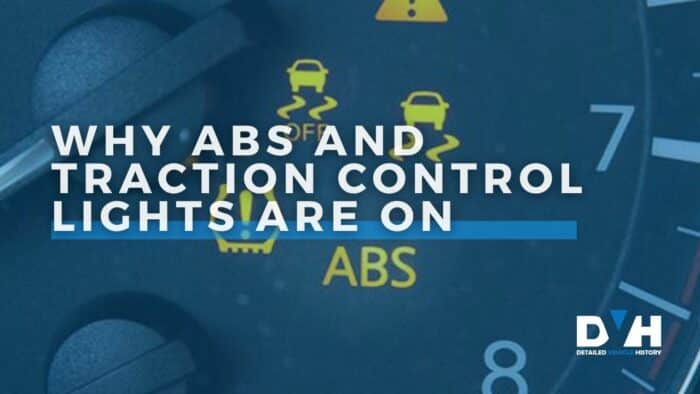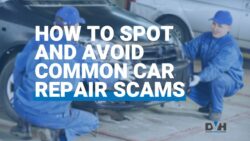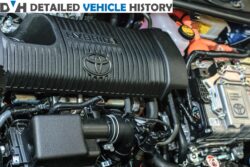Have you ever been driving along, minding your own business, when suddenly the ABS and Traction Control lights on your dashboard started to illuminate? It can be quite alarming and may leave you wondering what could be causing this issue. In this article, we will explore the seven most common reasons why your ABS and traction control lights may come on, and we’ll discuss what you can do to address each situation. So, let’s dive right in!
What are ABS and TCS?
Simply put, ABS stands for Anti-lock Braking System, and TCS stands for Traction Control System. Let’s take a closer look at what each of these systems does and how they contribute to vehicle safety.
Anti-lock Braking System
ABS, or Anti-lock Braking System, is a safety feature designed to prevent the wheels of a vehicle from locking up or skidding during sudden or hard braking. For example, when you need to stop your vehicle quickly, especially in emergency situations, it’s natural to apply full force to the brake pedal. However, this can cause the wheels to lock up, making it difficult to steer and maintain control.
That’s exactly where ABS comes into play. It works by rapidly pulsating the brakes on each wheel individually. This pulsating action helps to maintain traction between the tires and the road surface, allowing you to steer the vehicle while still applying maximum braking force. In other words, with the ABS, you can easily maintain control and stability while braking hard, reducing the risk of accidents caused by skidding or loss of steering control.
Traction Control System
The Traction Control System, or TCS, is another safety feature that works in conjunction with ABS. What the TCS does is help prevent wheel spin or loss of traction during acceleration, particularly on slippery surfaces like ice or wet roads. During situations when you accelerate quickly, the tires can lose grip and start spinning, which reduces your control over the vehicle. Instead of getting into an accident, the TCS takes control of the situation and establishes a balance. What do I mean?
TCS uses sensors to monitor the rotational speed of each wheel. If it detects that one or more wheels are spinning faster than the others, it will automatically reduce engine power and apply the brakes to that specific wheel, allowing the tire to regain traction. By preventing excessive wheel spin, TCS helps you maintain control and stability while accelerating, especially in challenging driving conditions.
By preventing wheel lockup during braking and minimizing wheel spin during acceleration, these systems help you maintain control and reduce the risk of accidents. This means that when you notice the ABS and traction control lights on, you should be a little bit worried about your safety. And by a little bit, I mean, a lot.
Now that we understand what each light may signify, we need to see what could be responsible for turning your ABS and traction control lights on.
ABS and Traction Control Light On? 7 Reasons Why
The most common reasons why you may find your ABS and traction control lights on are:
- – Loose wheel-speed sensor
- – Worn brake pads
- – Damaged wheel-speed sensor
- – Faulty ABS module
- – Low brake fluid level
- – ABS pump motor failure
- – Electrical issues
Loose wheel-speed sensor
One of the primary reasons for your ABS and Traction Control lights to illuminate is a loose or faulty wheel-speed sensor. These sensors are responsible for measuring the rotational speed of each wheel. If a sensor becomes loose or malfunctions, it may send incorrect signals to the ABS and traction control systems, triggering the warning lights.
Worn brake pads
Another common culprit for the ABS and Traction Control lights coming on is worn brake pads. As brake pads wear down, the distance between the wheel speed sensor and the tone ring increases. This change in distance can lead to inaccurate readings and cause the warning lights to activate. Regular maintenance and timely replacement of brake pads can help prevent this issue. To get accurate OEM maintenance schedules to follow to avoid worn-out brake pads, you can generate a vehicle history report with our VIN check tool. Visit the VIN check page to find out your vehicle’s specific maintenance schedules.
Damaged wheel speed sensor
In some cases, the wheel speed sensor itself may become damaged due to external factors such as road debris or corrosion. When this happens, the sensor may start to malfunction, leading to incorrect readings and turning the ABS and Traction Control lights on. If you suspect a damaged sensor, it’s crucial to have it inspected and replaced if necessary.
Faulty ABS Module
The ABS module is the brain behind your vehicle’s anti-lock braking system. If the module develops a fault, it can disrupt the communication between the ABS system and the wheel speed sensors. This communication breakdown can trigger the ABS and traction control lights. In such cases, professional diagnostic equipment is often required to identify and rectify the issue.
Low brake fluid level
Another reason why you may find your vehicle’s ABS system relies on an adequate supply of brake fluid to function correctly. If the brake fluid level drops below the recommended level, it can activate the ABS and Traction Control lights. Checking your brake fluid regularly and topping it up as needed can help prevent this problem from occurring.
ABS pump motor failure
The ABS pump motor is responsible for applying and releasing hydraulic pressure during braking maneuvers. If the pump motor fails, it can trigger the ABS and traction control lights. This issue often requires the expertise of a qualified technician to diagnose and replace the faulty component.
Electrical Issues
Electrical problems within the ABS and traction control systems can also cause the warning lights to come on. These issues can range from a blown fuse to a malfunctioning relay or wiring problem. Identifying and resolving electrical faults can be complex and may require professional assistance.
Are you a car buyer?
Before purchasing that used vehicle you have in mind, have you checked the vehicle’s service records? Do you know what defects, accidents, and damages the vehicle may have sustained before it was put up for sale? Are there visible warning lights on? Are the ABS and traction control lights on?
To get all the answers and information regarding a vehicle’s past and history, follow these steps:
- – Navigate to our VIN Check page
- – Fill out the form with the VIN and other information.
- – Select “VIN Check.”
You will immediately receive a concise and detailed document containing every piece of information about the vehicle you are interested in.
Is your ABS brake and traction control light on? What are the next steps to take?
If you find your ABS and traction control lights on, what you need to do is have your vehicle inspected by a professional auto mechanic and the problem fixed. Now, with this article, you can easily target specific areas to inspect and get the problem solved.
After the problem has been identified and fixed, you may find your ABS and traction lights still on. In this case, you or your mechanic may need to have the lights reset. How do you reset these warning lights? Let’s take a look at that in the next section.
How to Reset the ABS and TCS Lights
Once the underlying problem triggering the ABS and Traction Control lights has been fixed, it’s essential to reset the warning lights. Here’s a general procedure to reset the lights, though it may vary depending on your vehicle’s make and model:
- – Start by ensuring the vehicle is turned off and the parking brake is engaged.
- – Locate the diagnostic connector, often found near the driver’s side dashboard or under the steering column.
- – Use a jumper wire or a suitable diagnostic tool to connect the appropriate pins in the diagnostic connector.
- – Turn the ignition switch to the “on” position without starting the engine.
- – Wait for a few seconds until the ABS and Traction Control lights go off.
- – Disconnect the jumper wire or diagnostic tool from the diagnostic connector.
- – Start the engine and check if the ABS and Traction Control lights remain off.
And that’s it. Your car should be back to normal now! To avoid this, try to carry out regular maintenance on your vehicle and do so with the OEM maintenance schedule designed specifically for your vehicle. To get one, you need to get your VIN checked with our accurate VIN check tool.










